Ukrainian Use of Very Outdated Machine Guns With Thermal Scopes As Anti-Aircraft Armament Highlights Peculiar Rear Area Air Defence Dynamics in Russia-Ukraine War
🇷🇺 🇺🇦
One of the major analytical errors that is often made in the context of the Russia-Ukraine War is the failure to differentiate between forward area air defence and rear area air defence, with the latter generally beginning some 50 kilometers from the frontlines. With the exception of the opening days and weeks of the full-scale Russian invasion of Ukraine that began in February 2022, Ukraine has exclusively encountered crewed Russian fixed-wing and rotary-wing combat aircraft along the frontlines. Stated differently, there are no Russian fixed-wing, let alone rotary-wing, combat aircraft trying to penetrate Ukrainian airspace behind the frontlines/behind the largely inactive sections of the international border. As a result, Ukraine has been able to pursue two very different approaches to air defence.
In forward areas, Ukrainian air defences operate in the manner envisaged by militaries and air defence system designers worldwide. This requires the use of fairly high-end radar-guided and imaging infrared-guided surface-to-air missiles alongside a variety of primary active sensors (i.e., radars). In rear areas, however, Ukraine is able to draw upon a wide range of older—often obsolescent if not wholly obsolete if/when employed close to the frontlines/international border—systems to shoot down propeller-driven strike drones and, to a lesser degree, cruise missiles. As a result, forward area and rear area air defence dynamics are very different in the Russia-Ukraine War, and observers are cautioned against extrapolating the Ukrainian experience in rear area air defence to other military-geographical contexts in which adversary combat aircraft are likely to appear in rear areas far from the frontlines alongside various strike munitions.1
While the threat posed by Russia’s land-attack cruise missiles is best countered by the deployment of various primarily medium-range and short-range surface-to-air missile systems that could otherwise be productively deployed close(r) to the frontlines and which are expensive and remain in short supply, such land-attack cruise missiles are limited in terms of availability despite a dramatic expansion of Russia’s production capacity in this area. As a result, Ukraine’s rear area air defences primarily exist to intercept the ever-increasing numbers of Shahed-136/Geran-2/Garpiya propeller-driven fixed-wing strike drones and similar that Russia regularly launches to attack targets across Ukraine.
As currently deployed, propeller-driven strike drones in the vein of the Shahed-136/Geran-2/Garpiya are best understood as slow, poorly maneuvering, and non-responsive targets that are much unlike contemporary fixed-wing combat aircraft. These are, in many respects, far more similar to the fixed-wing combat aircraft that were employed in the First World War and much of the Interwar Period. As a result, the approaches to air defence that existed a century ago remain viable, not least when augmented by the use of radar, (electronic) acoustic detection systems, infrared imaging sensors, and various gunsights, including thermal imagers. The following image galleries offer a view into what rear area air defence now often looks like in Ukraine.
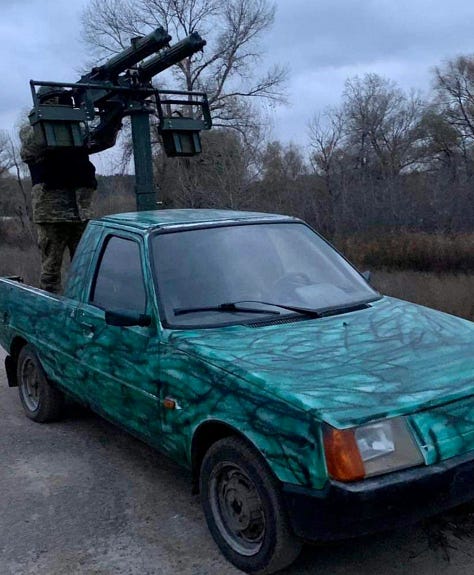
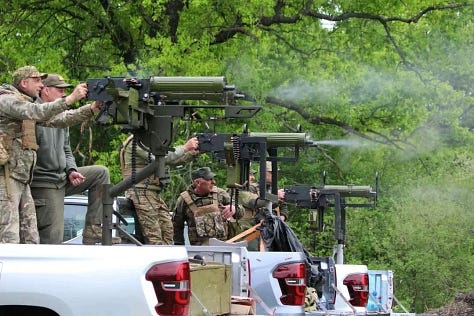
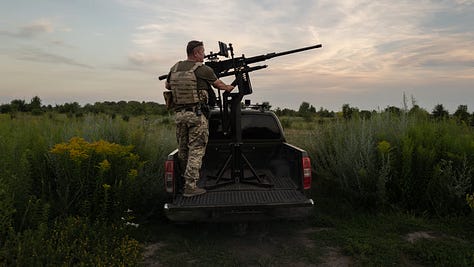
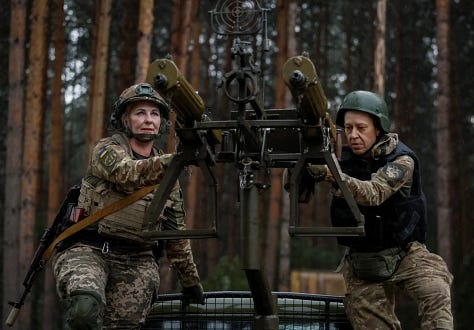
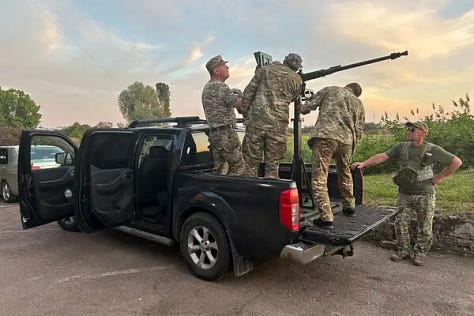
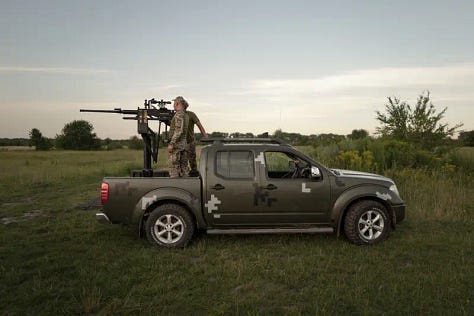
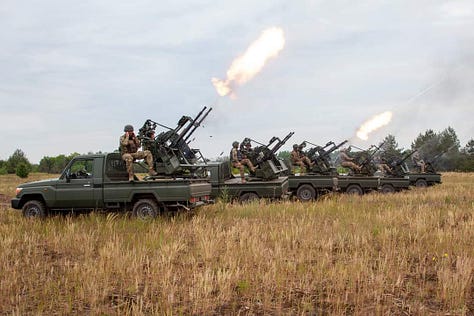
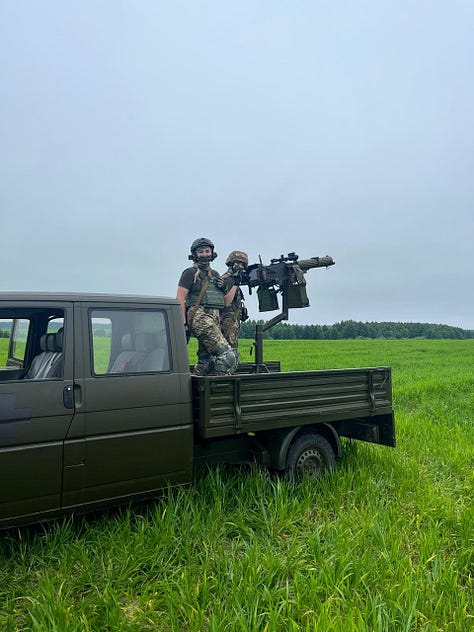

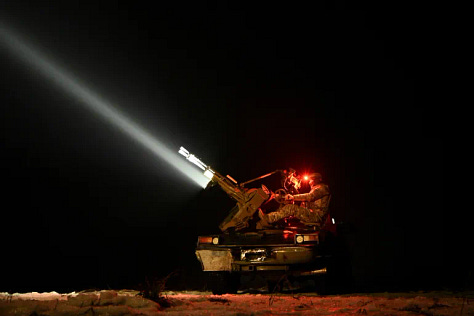
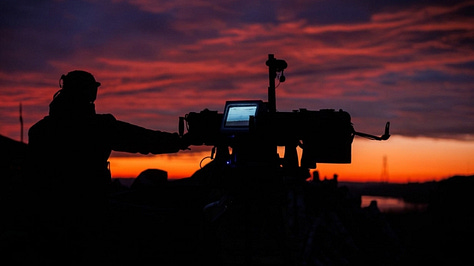
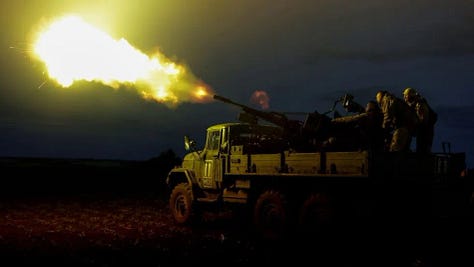
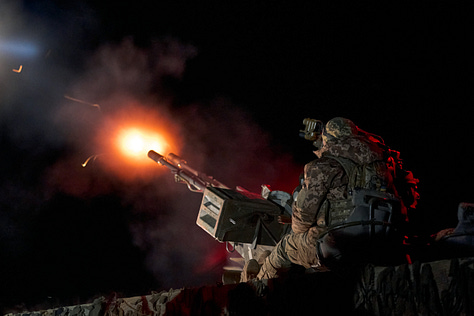
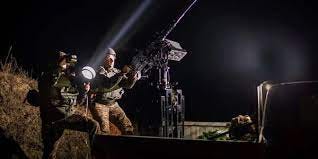
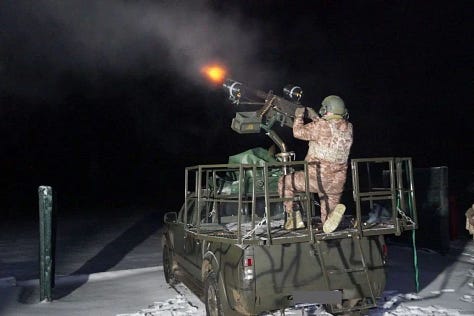
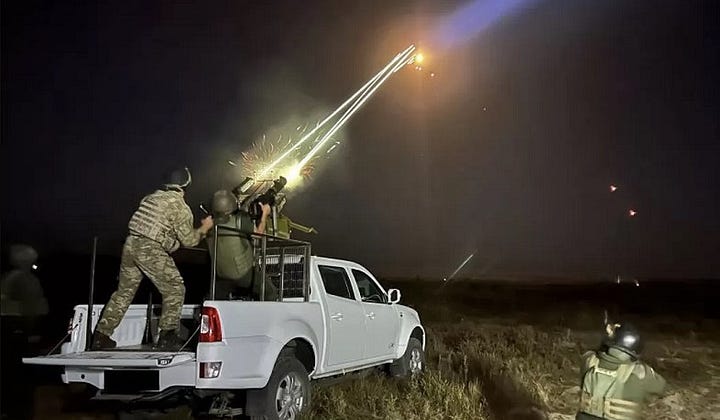
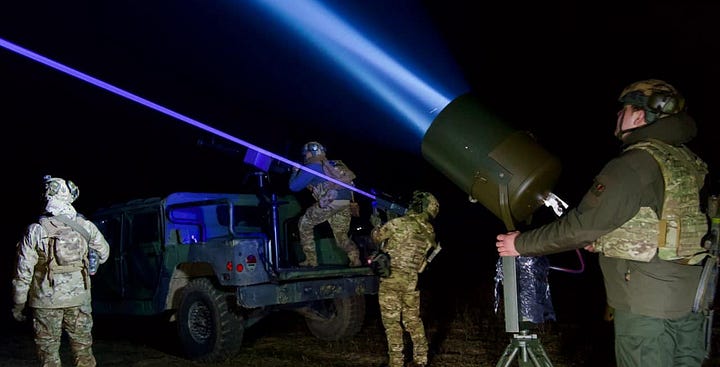
With the exception of the highly distinctive water-cooled PM M1910—the Imperial Russian version of the well-known Maxim Gun chambered for the Russian-Soviet 7.62×54mmR cartridge, a cartridge which remains in extremely widespread use in the 2020s—the machine guns and autocannons seen in the above images are designs that remain widely deployed worldwide. The water-cooled PM M1910 machine guns are not the only relics that Ukraine productively employs in the permissive context of rear area air defence against propeller-driven strike drones. An image recently circulating on Telegram features a Soviet-built DP-28 machine gun, which was first introduced in 1928, that is equipped with a thermal sight for use in an anti-aircraft capacity.
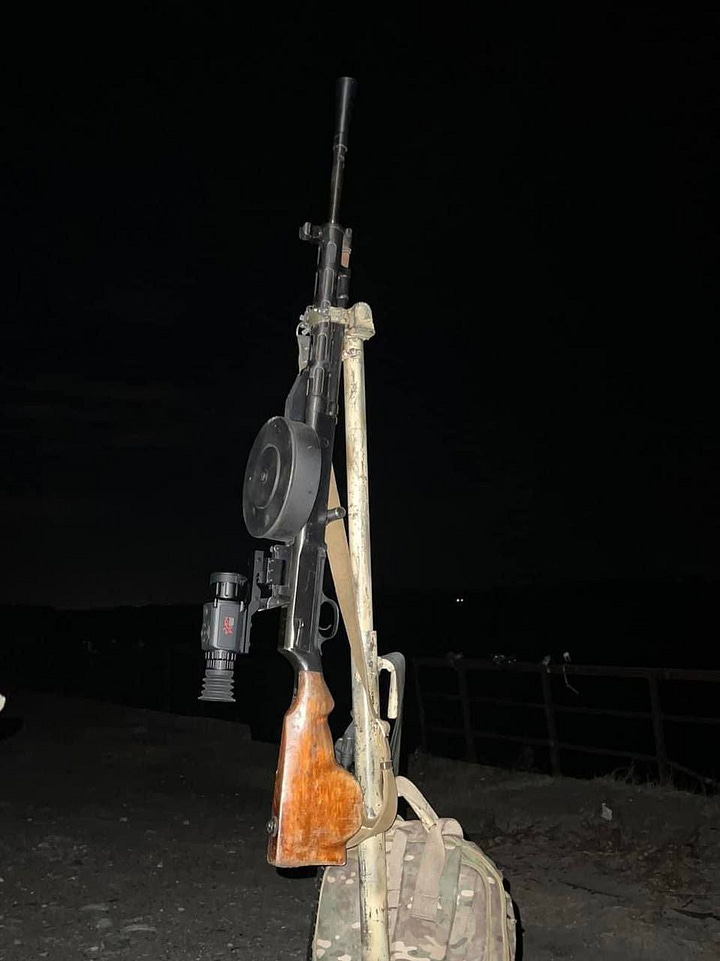
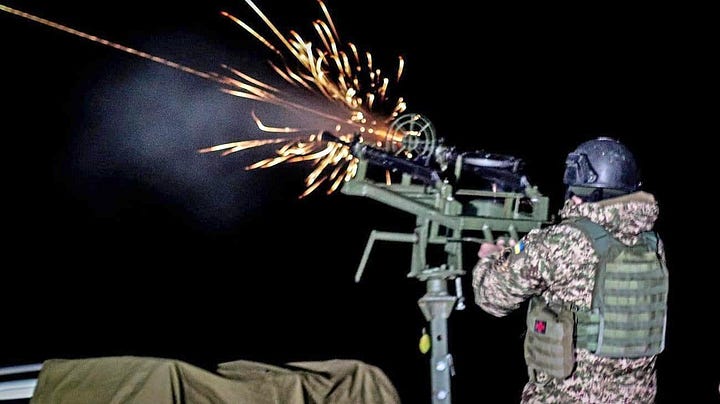
The DP-28 is a particularly outdated machine gun design—the even older water-cooled PM M1910, in contrast, has some important redeeming qualities that make it particularly well-suited for use against slow, poorly maneuvering, and non-responsive targets such as Shahed-136/Geran-2/Garpiya propeller-driven strike drones. Even so, essentially any machine gun can be productively employed against propeller-driven strike drones, particularly when thermal sights—which cost more than the outdated machine gun—are available.
It is important to note that Ukraine’s approach to rear area air defence is not limited to machine guns and autocannons. Ukraine is also using the Soviet AZP S-60, a 57×347 mm recoil-operated automatic anti-aircraft gun that was first deployed in the early 1950s. What is notable about the following video is that a truck-mounted 57 mm S-60 is equipped with a laser rangefinder and is complemented by a nearby rotary cannon of unknown design (the signature of multiple tracer rounds is from the rotary cannon, but the S-60 can also be seen using tracer ammunition).
Systems like the S-60 primarily remained in military inventories for use in wartime by mobilized reservists by the late Cold War and were frequently scrapped or sold on the used arms market for rock bottom prices from the early 1990s onward. Given the peculiarly permissive requirements of rear area air defence against large numbers of Shahed-136/Geran-2/Garpiya strike drones and similar in Ukraine’s rear areas, long-retired equipment like the S-60 can be productively used in times of dire need.
There is an important lesson here for other countries: some types of military equipment, including firearms, may be obsolescent if applied to frontline use but can nevertheless remain useful in other roles provided that the equipment is serviceable and replacement parts and ammunition remain available, which is often the case with many machine gun and autocannon designs. When it comes to machine guns, for example, essentially any machine gun chambered for extremely widespread 7.62×51mm and 7.62×54mmR cartidges can be maintained in reserve status for use in emergencies. While Ukraine uses imaging infrared and/or thermal sights when possible with machine guns and autocannons used to shoot down propeller-driven strike drones such as the Shahed-136/Geran-2/Garpiya, such armaments can also be productively used in other roles. It has never been easier for militaries to acquire simple but fairly inexpensive remote-controlled weapons stations for use in low-priority rear area security roles or to guard trenches along the frontlines. Militaries can also follow the Ukrainian lead in deploying very rudimentary but also very inexpensive uncrewed ground vehicles (UGVs) that are analogous to—and in some cases are—munition-like single-use systems. It makes little sense for any military to install a brand new machine gun on such a UGV or a remote-controlled weapon system that is used for a low-priority rear area security role or to guard a trench along the frontlines. The likes of the water-cooled PM M1910 and DP-28 can, however, be productively used in such roles after years of storage.
A caveat is in order because rear-area ballistic missile defence demands the deployment of very high-end air defence systems like the Patriot and the SAMP/T in areas far removed from the frontlines, insofar as a military only deploys endo-atmospheric ballistic missile defence interceptors with a limited defensive footprint. With its ballistic missile defences reliant on a particular version of the Patriot—the PAC-3—and the SAMP/T, Ukraine is forced to position these scarce and extremely valuable long-range air defence systems in rear areas, even though these could be productively deployed closer to the frontlines to target Russian combat aircraft. Ukraine would not have to do so if Russia did not deploy ballistic missiles like the Iskander that could attack targets located several hundred kilometers from the frontlines/international border.

